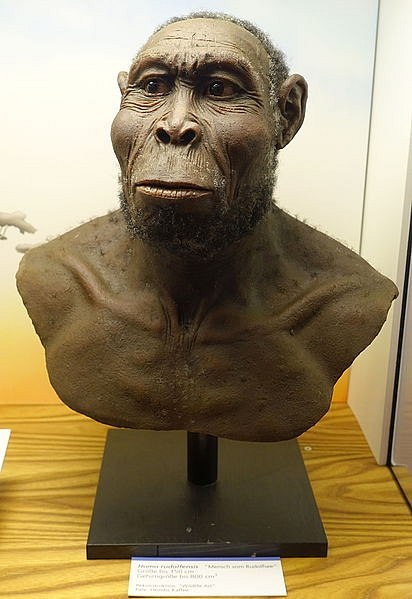#ChiwondoBeds
Explore tagged Tumblr posts
Photo

Homo Rudolfensis
Homo Rudolfensis is an early human species that lived in East Africa between c. 2.5 and 1.8 million years ago. It is known from a handful of skull, jaw and teeth fragments that remind alternatingly of Homo or of Australopithecus and that piece together to reveal a relatively large-brained, flat-faced species with robust teeth capable of chewing through tough plants.
The associated dates mean that Homo rudolfensis was around at a time that saw the emergence of our genus of Homo – a time still very much shrouded in mystery as the fossil remains are scarce, and thus, successfully building jigsaw puzzles with said remains is very difficult. This is reflected in debates that rage regarding the relationship between Homo rudolfensis and its close contemporary, Homo habilis, and the fact that some scientists favour lumping both into one species instead. It is moreover unclear whether Rudolfensis and Habilis have indeed reached their proper place within Homo, or whether they might fit better within Australopithecus instead.
Discovery
East Africa was a pivotal stage for the early years of human species, and palaeoanthropologists Louis and Mary Leakey and their sons played a central role in its discovery as such. Already in the 1950s, their efforts at Olduvai Gorge in Tanzania had uncovered early stone tools belonging to what they termed the Oldowan industry, and in the 1960s, their son Jonathan found bones and bone fragments that the Leakey team assigned to the then-new species Homo habilis, which became the earliest member of the genus of Homo known at the time.
A research project that focused its attention on northern Kenya, along the shores of Lake Turkana, would further change the picture of early Homo. Richard Leakey – Louis and Mary's son – led fieldwork there in the 1970s, and in 1972, at Koobi Fora, one of his team members, Bernard Ngeneo, discovered an interesting collection of skull fragments.
Once pieced back together, the face that greeted the team was striking: it had a steep forehead, a flat face, and a wide palate – seemingly a mixture of Homo and Australopithecus features that did not match anything else known at the time.
The skull, known scientifically as KNM-ER 1470, was initially dated to c. 2.4 million years old (later adjusted to c. 1.8 million years in 1989, and then to c. 2 million years in 2013) and assigned by Richard Leakey first to an indeterminate Homo species but then to Homo habilis. However, since the skull's features differed quite a bit from known Homo habilis specimens and its cranial capacity was larger, it sparked a whole lot of bickering and arguing in the scientific community.
Already in 1978, only two years after Leakey assigned the skull to Homo habilis, the Russian scientist Valerii Alexeev proposed giving the new skull the lead role in its own species, instead, naming it Homo rudolfensis (after Lake Turkana's old name, Lake Rudolf). However, the English version of Alexeev's paper did not appear until 1986, and, since not much data was put forth, the species name of Homo rudolfensis was not accepted by the scientific community until the early 1990s. Even so, the debate has continued, though, just like Homo habilis, rudolfensis' mixture of features does not make it a clear match with either Homo or Australopithecus.
Continue reading...
35 notes
·
View notes